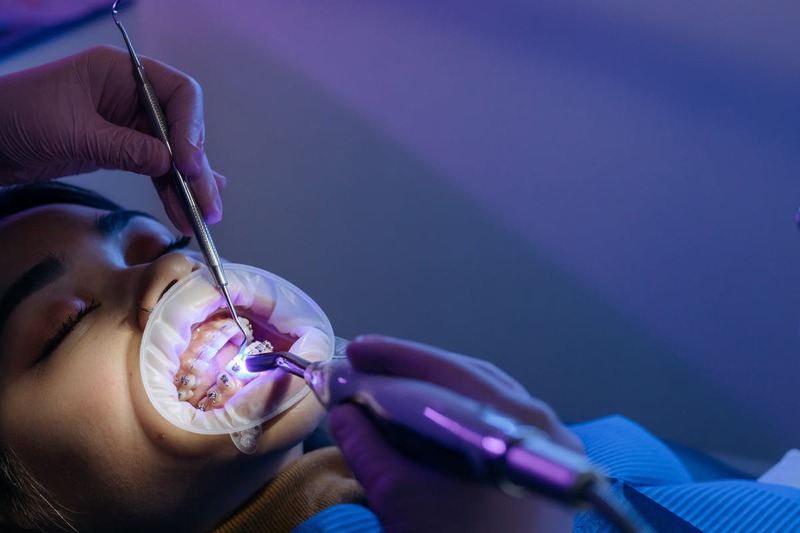Navigating the often-complicated world of dental procedures can be a challenging endeavor. When managing issues related to the frenum, that thin connective tissue inside the mouth can sometimes restrict movement, so deciding on the right course of action is imperative. A frenectomy is a corrective procedure that resolves this by either snipping or removing the frenum. It is typically recommended when the frenum’s placement or size negatively impacts one’s oral health or quality of life. It is widespread among infants with tongue-tie conditions and adults who experience discomfort or difficulty in oral functions.
What Is a Frenectomy?
A frenectomy is performed when the lingual (under the tongue) or labial (attached to the lip) frenum causes problems such as speech difficulties, gaps between teeth, or challenges with breastfeeding. The procedure makes more room for movement, allowing for a more excellent range of motion that can improve daily activities.
Frenectomy Options
When considering tailored frenectomy services, there are typically two main options: traditional surgical frenectomy and laser frenectomy. Both have unique benefits and drawbacks, and the decision should be made based on several factors, including the patient’s condition, pain tolerance, recovery preferences, and more.
Traditional Surgical Frenectomy
The conventional approach to a frenectomy involves using a scalpel or scissors to make the necessary alterations to the frenum. This procedure may require stitches and generally leads to a more extended recovery period accompanied by some discomfort. However, it’s a well-established technique with a track record of success.
Laser Frenectomy
In contrast, a laser frenectomy is a more modern and less invasive approach. The procedure uses a specialized laser to cut through the tissue with minimal bleeding, reducing the risk of infection and often eliminating the need for stitches. The precision of the laser can make for a quicker recovery and less discomfort post-procedure.
Evaluating the Pros and Cons
To decide which frenectomy method is the best fit, weighing the advantages and disadvantages of each option is critical. Here’s a brief rundown:
- Traditional Surgery Pros: Familiar procedure, cost-effective, widely available.
- Traditional Surgery Cons: More invasive, longer recovery, greater chance of discomfort.
- Laser Frenectomy Pros: Less invasive, less bleeding, faster healing, potentially less painful.
- Laser Frenectomy Cons: More expensive, requires specialized equipment and expertise.
Considering Patient-Specific Factors
Every patient is unique, and confidence factors can influence the decision-making process. These include age, pain sensitivity, medical history, anxiety levels related to surgery, and the intended outcome. Ensuring open communication with your dental professional about these personal considerations is vital in charting the course for the procedure.
Consultation with a Specialist
The role of a dental specialist in the decision-making process cannot be overstated. They can provide insight into the latest techniques and technologies while considering the patient’s particular needs. Their expert opinion often serves as the guiding light for patients unsure about which option to choose.
Cost and Insurance Considerations
Of course, the cost can be a significant factor when deciding between traditional surgery and a laser frenectomy. While laser procedures can be more costly upfront, they may offer savings in the form of less medication and fewer follow-up appointments. It’s essential to review what is covered by insurance and what will be out-of-pocket expenses.
Recovery and Aftercare
Recovery time and aftercare procedures can differ vastly between traditional surgery and laser frenectomy. Typically, laser procedures promise a quicker return to normal activities, which could be crucial, especially for working professionals or children in academic settings.
Dental Follow-up
Regardless of the chosen procedure, follow-ups with the dentist or oral surgeon are a must to ensure proper healing. It also allows for the professional to address any complications or concerns that may arise promptly.
Home Care
Patients must adhere to a specific home care routine to support healing. This might include dietary changes, oral hygiene practices, and possible medication.
Partial Dentures
It’s worth mentioning that frenectomy procedures can sometimes precede or coincide with other dental treatments or additions, such as partial dentures. If there are spaces left from extracted teeth or gaps that a problematic frenum has helped create, a partial denture can provide cosmetic relief and improve chewing function and overall dental health. Those curious about integrating such solutions should find out more about them in a detailed consultation with a dental specialist.
Advance Dental Treatments
A frenectomy can be part of a series of advanced dental treatments to enhance oral functionality and aesthetics. Modern dentistry has made leaps and bounds, allowing for a customized approach to patient care. Whether reconstructive work or cosmetic enhancement, clinics that pride themselves on being a family dental center excellence offer an array of cutting-edge options that cater to the whole family’s needs.
Listen to Your Body and Trust Your Decision
The path to a successful frenectomy lies in understanding your body, knowing your needs and limitations, and establishing trust with your dental provider. Whether opting for the traditional route or going for the efficiency of laser technology, what matters is that the procedure is tailored to bring the most significant benefit to your dental health and overall well-being.
Wrapping Up
Deciding between laser frenectomy and traditional surgical frenectomy involves careful consideration of both the clinical aspects and the personal circumstances of the patient. Reflecting upon the pros and cons, discussing with specialists, considering financial implications, and understanding the recovery process are all steps toward making an informed decision. Ultimately, the right choice will align with an individual’s health needs, preferences, and comfort for a journey that enhances their oral health and quality of life.

